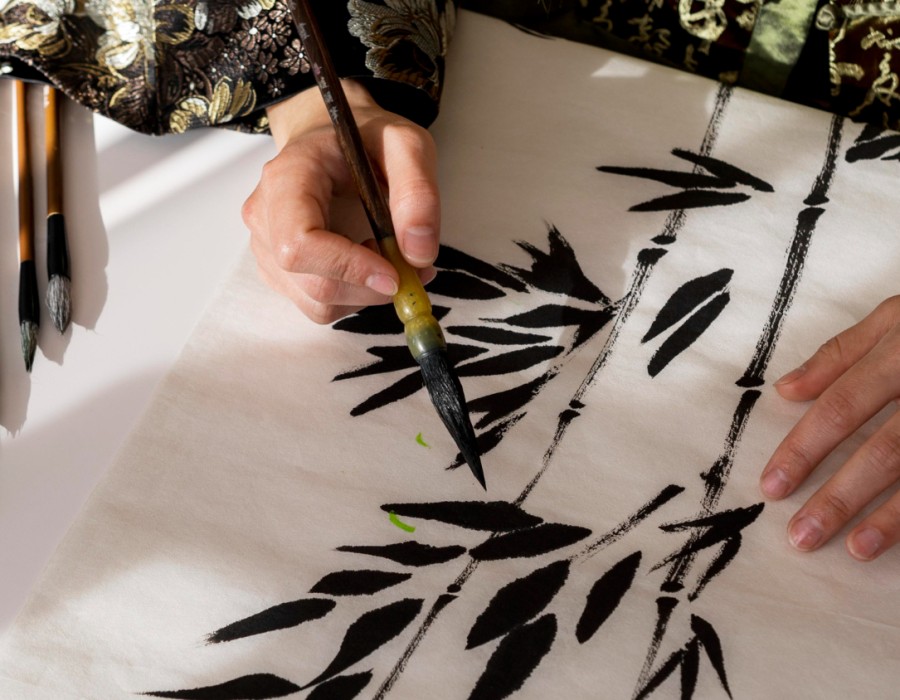Hand block printing is one of India’s most cherished textile traditions, embodying centuries of craftsmanship and cultural heritage. This intricate and labor-intensive technique has not only survived the test of time but has also gained global recognition for its authenticity and aesthetic appeal. In the age of mass production, the artistry of cotton hand block print fabric continues to thrive, preserving a rich legacy that blends tradition with contemporary fashion.
The Historical Roots of Hand Block Printing
The origins of hand block printing in India date back to ancient times, with evidence suggesting its practice as early as 3000 BCE. Initially used for temple offerings and royal garments, this technique evolved into a widespread craft, especially in regions like Rajasthan, Gujarat, and Madhya Pradesh. The meticulous process involves artisans carving intricate patterns onto wooden blocks, dipping them in natural dyes, and stamping them onto fabric, creating distinctive and vibrant designs that are unique to this traditional art form.
The Craftsmanship Behind Cotton Hand Block Print Fabric
The making of cotton hand block print fabric is a time-honored process that requires precision and skill. The fabric, usually pure cotton fabric, is first washed to remove impurities, ensuring that it absorbs the natural dyes effectively. Artisans then use wooden blocks, each intricately carved with different motifs, to imprint patterns onto the fabric. The layering of colors and meticulous alignment of blocks results in a mesmerizing fusion of design and artistry, making each piece a one-of-a-kind creation.
Why Cotton is the Ideal Choice for Hand Block Printing
Cotton is the preferred base for hand block printing due to its breathability, durability, and ability to hold natural dyes exceptionally well. The versatility of cotton hand block print fabric India allows artisans to create a wide range of textiles, from sarees and dupattas to bed linens and home decor items. The softness of cotton makes it perfect for everyday wear, while its absorbent nature enhances the vibrancy of plant-based and eco-friendly dyes.
Sustainability and Ethical Practices in Hand Block Printing
As the world shifts towards sustainable fashion, pure cotton fabric online has become increasingly popular among eco-conscious consumers. Hand block printing is an environmentally friendly process, using natural dyes derived from plants, minerals, and flowers, reducing chemical waste. Additionally, many artisans use organic cotton, ensuring that the production process remains ethical and does not harm the environment.
The Global Demand for Cotton Hand Block Print Fabric
The global appreciation for handcrafted textiles has led to a resurgence of interest in cotton hand block print fabric India. Designers and fashion houses worldwide are incorporating this traditional art into contemporary collections, celebrating its timeless appeal. The availability of pure cotton fabric online has further boosted accessibility, allowing consumers across the world to experience the elegance of Indian hand block prints.
Preserving the Legacy for Future Generations
Despite its growing popularity, hand block printing faces challenges due to mechanized textile production. However, organizations, designers, and conscious consumers are playing a crucial role in keeping this heritage craft alive. By supporting artisans, promoting fair trade practices, and purchasing authentic cotton hand block print fabric, we contribute to the preservation of this exquisite tradition for future generations.
Conclusion
Hand block printing is more than just a craft—it is a legacy that embodies history, art, and sustainability. As demand for pure cotton fabric online continues to grow, the importance of preserving this age-old tradition becomes even more significant. Whether used in fashion, home decor, or artistic expression, cotton hand block print fabric India remains a symbol of cultural heritage, craftsmanship, and timeless beauty. By embracing and supporting this exquisite art form, we ensure that the legacy of hand block printing flourishes for years to come.





Comments